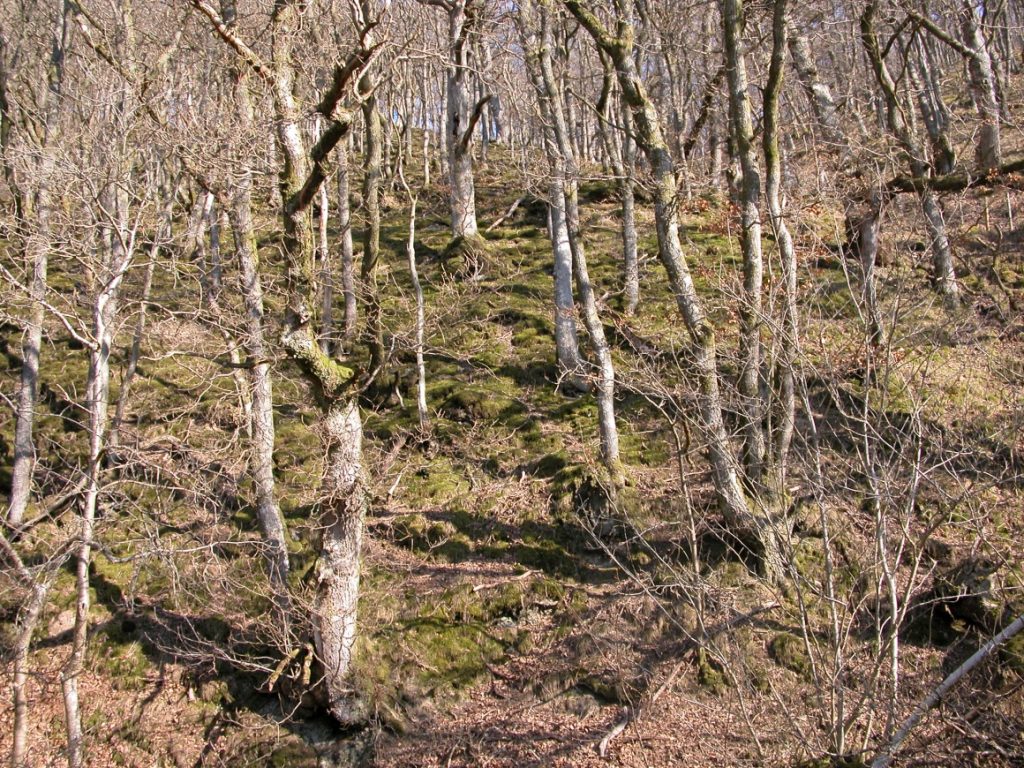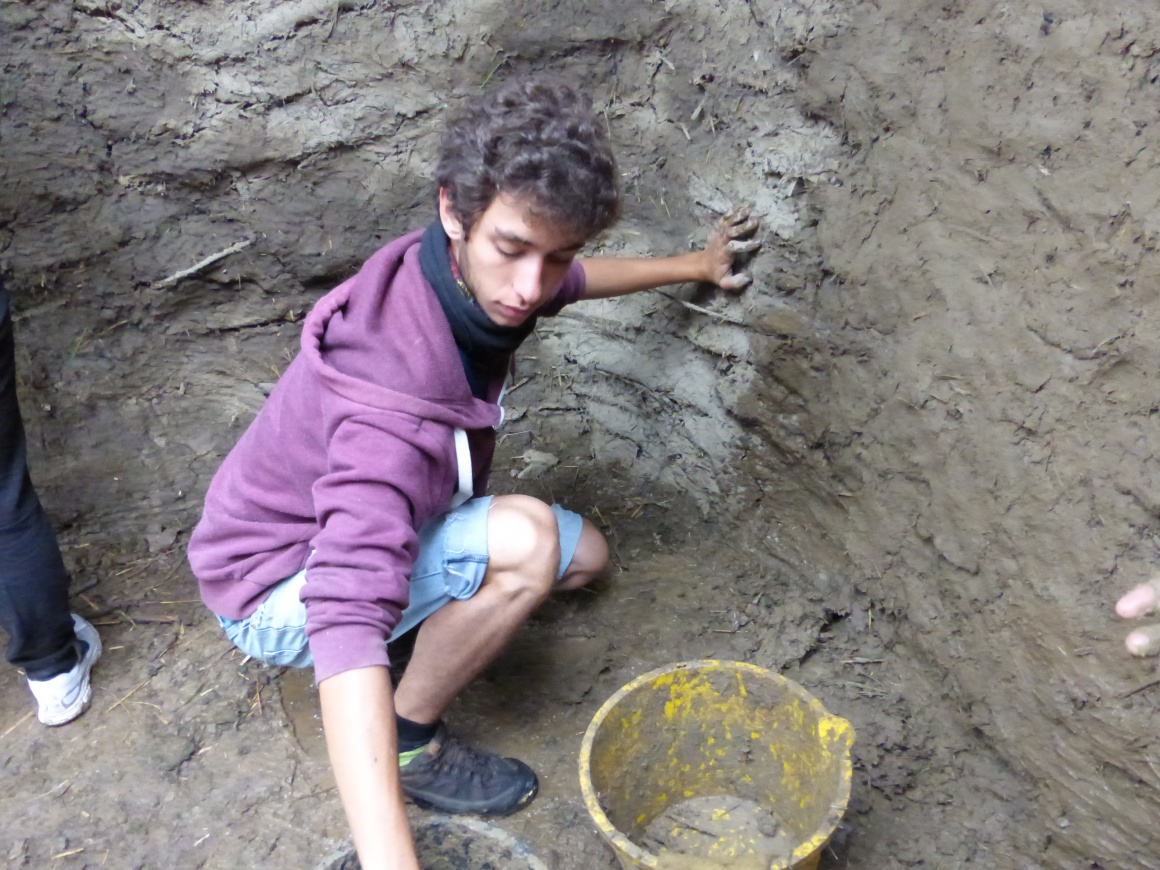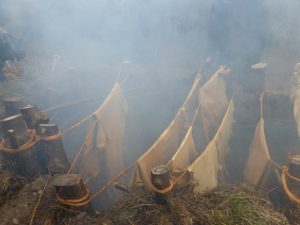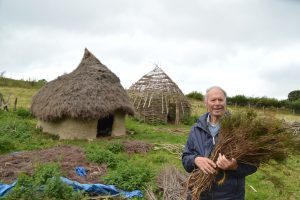The settlement is situated on a beautiful site on the edge of the Cambrian Mountains. It’s not Salisbury Plain – the evidence that our ancestors trod this hill in the Neolithic is not tangible – but they have left their footprints all around us. There are standing stones in the Sychnant valley just over the hill – or high up above the Elan valley to the south west. There is the great Walton Basin ritual site to the south, and beyond that the long barrows and houses of Dorstone Hill in Herefordshire. Ritual sites near Welshpool to the East include a Woodhenge. And far away to the north lie the Neolithic longhouses and tombs of Angelsey.
The footprint of our buildings are based on the evidence from very sparse excavations from the Neolithic across the country. The rest is left to our imaginations. What are the raw materials that we have around us? What would the vegetation have been like 5,000 years ago – and the climate? How could we put this together with stone tools? What tools do we have from this period?
We started in the woods, planting trees, creating coppice, managing our oaks to guarantee a perpetual source of materials for the site in years to come. We then harvested and prepared materials for building the first small houses. The designs of the first houses are based on excavations at Durrington Walls – the only substantial Neolithic settlement discovered so far in mainland Britain. Earth and clay were dug from the site for the cob walls.
We have been experimenting with trial crops of emmer wheat and flax in preparation for planting on the site. This year we will be building the first gardens around the houses, with culinary and medicinal plants that our ancestors would have known.
We plan to stock the farmstead with livestock from the Neolithic. We have started with the sheep…..
In the course of our reconstructions we will be using many ancient crafts – many already explored at Old Chapel Farm.
The Tannery has been constructed with generous help from the Ashley Family Foundation. Many volunteers have taken part in the building. Its focus is to investigate the making of the first fabrics in this country. Its building has meant that we have been able to initiate our teaching programme.
We are very grateful to the National Trust for the heather. It is difficult to locate heather of sufficient length and quantity locally today. We have spent many pleasant hours cutting on the Long Mynd.
A generous grant from the Powys Welsh Church Act Fund has enabled us to start the Wednesday Volunteering group, enabling local people to take part in the build. They are constructing a very comfortable barn for our sheep and a much needed woodshed.





























